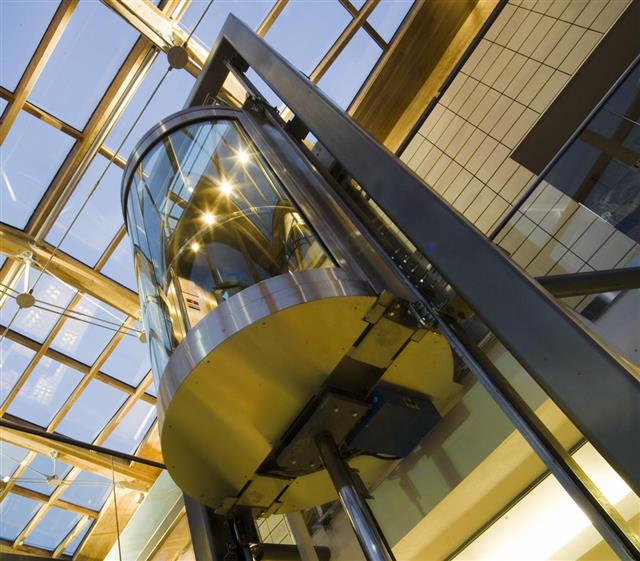
Elevators are a very useful mode of transport inside a building and act as an alternative to stairs. Here are the different types of elevators mentioned in the article coming up, take a look.
An elevator is one of the most convenient type of transport inside a building, that consists of more than 10 floors. Even though it is possible to climb the staircase to access the floors, taking the elevator is a faster and a more useful alternative over the stairs. It is defined as a vertical equipment for transport, used to commute individuals and goods within the building floors. Elevators function with the help of a powered electric motor and they run on either traction cables, counterweight systems or hydraulic fluids. People prefer using the elevator because of the ease and convenience that they provide, making stairs a timely option. Depending on the mechanisms mentioned above, there are different types of elevators that are installed in buildings. These are mentioned in the paragraphs below. So, read on and find more about your daily means of transport to your office and home floors.
Elevator Types
Elevators were invented for luxury, but today they are used as a necessity because of the comfort and convenience they provide. The time that was spent on climbing stairs is minimized considerably as elevators are an incredibly faster way of transport within floors in a building. Another advantage of these elevators is that they can carry people, animals, goods, heavy luggage, etc., which takes both time and effort to be transported through stairs. Elevators are used in residential and commercial buildings, hospitals, malls, construction sites, restaurants and even libraries for transporting the respective objects. All these elevators have specific mechanisms which define their types. In the paragraphs below, we have put together various elevator types. Take a look!
Traction Elevators
The first type of elevators are known as traction elevators, and they function with the help of a rope that passes over a wheel. This wheel is attached to an electric motor and when the motor is powered, the wheel is set in motion, pulling the rope and in turn lifting the elevator car to the desired floors. The wheel is usually placed in the machine room, constructed on the highest floor of the building. The speed of the wheel and rope coordination is increased by adding a counterweight to one end of the rope (the other end is attached to the car).
The traction elevators are further divided into three types, such as;
- Geared Traction: These have a gearbox attached to the powered electric motor. This increases the speed, making the elevator move up to, almost 500 ft/min.
- Non-Geared Traction: These do not have a gearbox, but the wheel is directly attached to the motor, increasing the speed of the elevator to about 200 ft/min.
- Non-Machine Room Elevators: Usually a machine room is needed to accommodate the motor and the wheel, but these do not possess it. They have the motor and the wheel placed directly over the elevator shaft as it is more convenient to access in case of repairs, and you don’t have to dedicate an entire room to it.
Hydraulic Elevators
This type of elevator has a slightly slower mechanism, which includes a piston placed at the bottom of the elevator. This piston is controlled by an electric motor and its job is to push the elevator car up or down when the specific floor buttons are pressed. However, this is a very slow process and thus, the maximum speed of travel is 200 ft/min. The electric motor is accommodated in a machine room which is built in the lowest level of the building, unlike the traction elevators. These types of elevators are used for smaller buildings with less than 10 floors.
Like the traction, there are different types of elevators in hydraulic as well. These are;
- Conventional: This type includes a sheave or a pulley that extends further below the elevator pit, and this provides support to the elevator while it is descending. The speed however is reduced to 60 ft/min because of this extra retraction provided to the piston.
- Non-Hole Hydraulic: The hydraulic elevators usually have a hole below the pit for faster movement, but these types don’t possess it because their piston is on, either side of the car. Because of this, the speed is brought down to 20 ft/min which is very slow.
- Roped: These include the piston as well as a rope on a wheel to move the elevator, due to which the speed is increased to about 60 ft/min.
With these different types of elevators, you must have surely found out new facts about them. Well, now that you know all about elevators, find out which type of elevators do you travel by!
